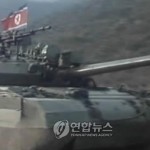According to the Daily NK:
This year, the North Korean authorities have been cracking down on the sale and distribution of products, tools and materials coming out of the Kaesong Industrial Complex. As a result, such Korean goods, formerly an expensive but popular choice in Hwanghae and South Pyongan Provinces, are now hard to find in markets.
A source from South Pyongan Province who spoke with The Daily NK in China explained, “Right up until last year, literally anything being made in the Kaesong Complex was available in the market, including clocks, metal, screws, clothes, underwear, toys and parts of electronics. However, the amounts have fallen dramatically since regulations were strengthened.”
The reason behind the regulations is unclear, however; the source suggested it could only be because of deteriorating inter-Korean relations.
Regardless, the source went on, “Nowadays, revealing the fact you sell those Kaesong Complex goods results in high fines and puts you in a bind” Therefore, he went on, “Only bread (Choco Pies), stainless steel or ceramic bowls and underwear are being sold.”
One consequence of the crackdown is that it makes the sale of other South Korean products smuggled in from China equally difficult. Albeit with some provincial differences, clothes and electronics cannot now be displayed on stalls, and must be sold in alley markets in secret.
A source from Shinuiju explained, “Market watch guards go around markets every day inspecting stalls with no notice; their investigation into South Korean products is really severe.” He explained, “If they find goods with Korean writing on, they confiscate them and give them back after two or three days later, after fines have been paid.”
“I hear there was a decree from above reinforcing crackdowns, but won’t this only lead to bribes?” the source pointed out.
Even when readily available, South Korean products are at the top of the price range, so most average families cannot afford them; one Choco Pie, a circular, individually wrapped chocolate cake made famous by the movie “JSA”, is between 180 and 200 won, a set of women’s underwear is 90,000 won, and a set of roughly ten plates, five or six small bowls and some coffee cups is around 250,000 won.
The source reported, “Due to the severe regulations, some traders sell them at home or in secret, hiding the goods behind the curtain.”
Interestingly, one South Korean official with the Kaesong Industrial Complex told the Daily NK that product leakage is not a problem at Kaesong, saying, “There have been almost no cases of complete products leaking out, but it is possible for stock, tools or things provided to workers like Choco Pies. However, the leaks are not enough to affect factory management.
And yet, one defector who used to be a worker in a shoe factory in charge of testing product quality explained that the siphoning off of materials, complete products, tools and other things is common among North Korean workers.
“The way they hide things and bring them out of the factory is really expert. I sometimes put up to 20 pairs of shoes on my body and came out of the factory. If you wear a long, thick winter coat then it is not so remarkable. Sometimes we did it in collusion with the factory manager.”
Read the full story here:
South Korean Products Disappear from Markets
Daily NK
Park Jun Hyeong and Mok Yong Jae
2010-3-10

